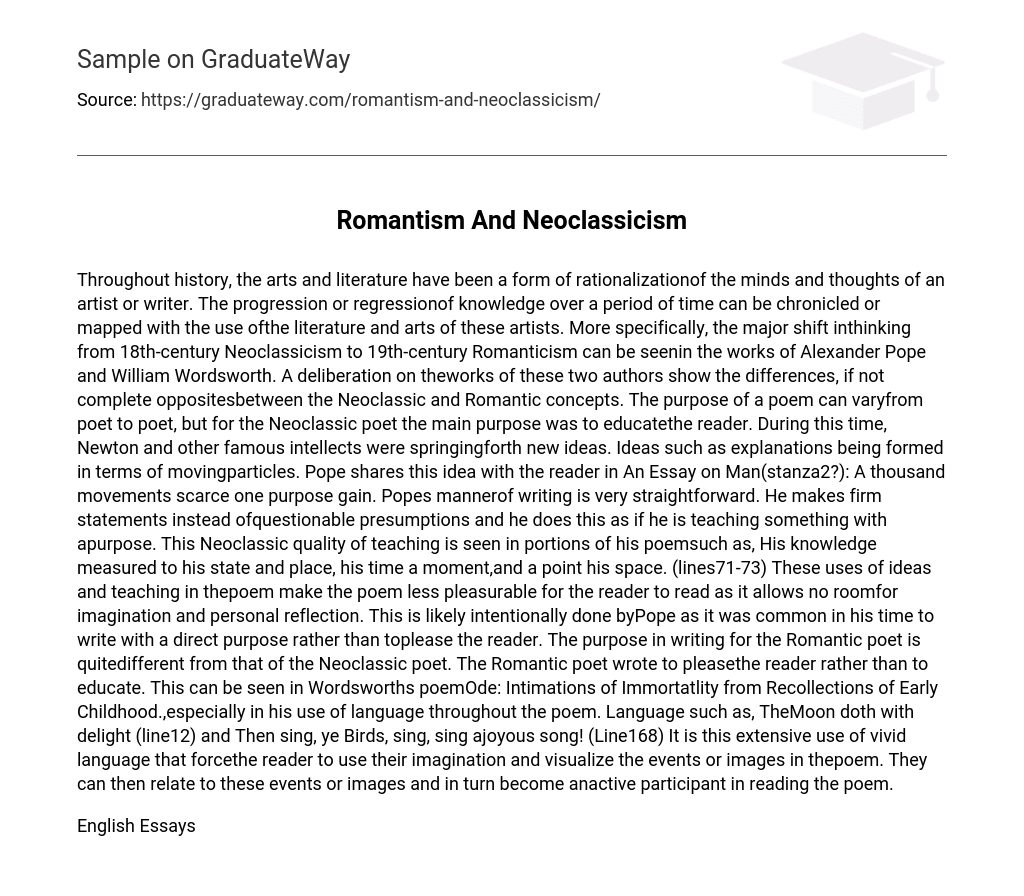Throughout history, the arts and literature have been a form of rationalizationof the minds and thoughts of an artist or writer. The progression or regressionof knowledge over a period of time can be chronicled or mapped with the use ofthe literature and arts of these artists. More specifically, the major shift inthinking from 18th-century Neoclassicism to 19th-century Romanticism can be seenin the works of Alexander Pope and William Wordsworth.
A deliberation on theworks of these two authors show the differences, if not complete oppositesbetween the Neoclassic and Romantic concepts. The purpose of a poem can varyfrom poet to poet, but for the Neoclassic poet the main purpose was to educatethe reader. During this time, Newton and other famous intellects were springingforth new ideas. Ideas such as explanations being formed in terms of movingparticles.
Pope shares this idea with the reader in An Essay on Man(stanza2): A thousand movements scarce one purpose gain. Popes mannerof writing is very straightforward. He makes firm statements instead ofquestionable presumptions and he does this as if he is teaching something with apurpose. This Neoclassic quality of teaching is seen in portions of his poemsuch as, His knowledge measured to his state and place, his time a moment,and a point his space. (lines71-73)
These uses of ideas and teaching in thepoem make the poem less pleasurable for the reader to read as it allows no roomfor imagination and personal reflection. This is likely intentionally done byPope as it was common in his time to write with a direct purpose rather than toplease the reader.
The purpose in writing for the Romantic poet is quitedifferent from that of the Neoclassic poet. The Romantic poet wrote to pleasethe reader rather than to educate. This can be seen in Wordsworths poemOde: Intimations of Immortatlity from Recollections of Early Childhood.,especially in his use of language throughout the poem. Language such as, TheMoon doth with delight (line12) and Then sing, ye Birds, sing, sing ajoyous song! (Line168)
It is this extensive use of vivid language that forcethe reader to use their imagination and visualize the events or images in thepoem. They can then relate to these events or images and in turn become anactive participant in reading the poem.





